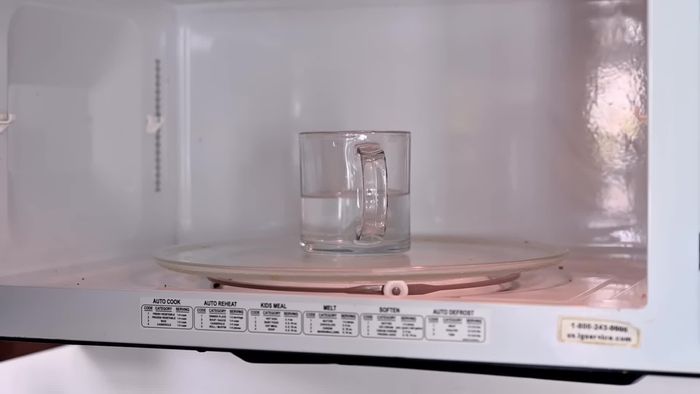Craving fluffy, pillowy naan bread but following a vegan lifestyle? Look no further! This article dives deep into the delicious world of vegan naan, exploring both the convenience of store-bought options and the rewarding experience of making it from scratch. We'll compare the taste and texture of homemade vegan naan against popular store-bought varieties, helping you decide which best suits your needs and preferences. Whether you're a seasoned baker or a kitchen novice, we've got you covered.
Discover the secrets to achieving that perfect, slightly charred exterior and wonderfully soft interior with our comprehensive guide. From exploring different flour options to mastering the crucial techniques for achieving the ideal texture, we'll equip you with everything you need to succeed. Ready to embark on a culinary journey filled with flavor and satisfying results? Let's get started with our step-by-step guide to creating the perfect vegan naan bread.
Tools Needed
- bowl
- whisk
- fork
- clean countertop
- clean dish towel
- pastry cutter
- parchment paper
- baking sheet (optional)
- cast iron skillet
- rolling pin
Ingredients
- Water: 2-3 cups
- Cane sugar: 2 teaspoons
- Active dry yeast: 1.5 teaspoons
- All-purpose flour: 2 cups
- Sea salt: 0.5 teaspoon
- Baking powder: 0.25 teaspoon
- Neutral flavored oil (e.g., avocado oil): 1 tablespoon
- Cilantro: chopped, to taste
- Vegan butter: melted, to taste
- Flaky sea salt: to taste
- Garlic: a couple of cloves, grated (optional)
Step-by-Step Instructions
Step 1. Preparing the Dough
- Heat 2-3 cups of water until lukewarm. Pour into a bowl, mix in 2 teaspoons of cane sugar, and whisk until dissolved.
- Add 1.5 teaspoons of active dry yeast. Let it sit for 15 minutes to activate.
- In a separate bowl, mix 2 cups of all-purpose flour, 0.5 teaspoon of sea salt, and 0.25 teaspoon of baking powder.
- Add the yeast mixture and 1 tablespoon of oil to the flour mixture. Mix with a fork until shaggy.




- Knead the dough with oiled hands for 5-6 minutes until smooth and elastic. Add a few drops of lukewarm water if needed.
- Place the dough in an oiled bowl, cover with a clean dish towel, and let it rest in a warm place (e.g., oven with light on) for 1.5 hours.


Step 2. Shaping and Resting the Naan
- Punch down the dough, briefly knead, and divide it into 8 equal portions. Roll each portion into a ball and let them rest for another 10-15 minutes.

Step 3. Cooking the Naan
- Roll out each dough ball thinly into an oval shape (about 8 inches long and 5 inches wide). Sprinkle with chopped cilantro and pat down.
- Preheat a cast iron skillet over medium-high heat until nearly smoking. Dampen your hands and place a naan in the hot skillet, watered side down. Cook for 45-60 seconds.
- Flip the naan and cook for another 30-40 seconds, covering the pan with a lid to steam.



Step 4. Serving the Naan
- Serve warm with melted vegan butter and flaky sea salt. For garlic naan, add grated garlic to the melted butter before brushing.

Read more: Easy Indian Bread Pudding Recipe: A Simple Dessert
Tips
- If your yeast mixture doesn't bubble up after 15 minutes, your yeast has expired.
- Oil your hands while kneading to prevent sticking.
- Don't add too much water to the dough; it will become too wet.
- Roll the naan outward and off, not back and forth, to avoid breaking the gluten.
- Dampen the naan before placing it in the hot skillet to help it stick.
- Covering the skillet while cooking the second side helps create flaky layers.
Nutrition
- N/A
FAQs
1. Is making vegan naan bread really that difficult?
No! While it requires a few steps, the process is straightforward and achievable even for beginner bakers. Our recipe provides clear instructions to guide you.
2. What's the biggest difference in taste between homemade and store-bought vegan naan?
Homemade naan generally boasts a fresher, softer texture and a more pronounced, subtly yeasty flavor. Store-bought options can sometimes be slightly drier or have a more processed taste.
3. Can I use any type of flour for vegan naan?
While all-purpose flour works well, experimenting with other flours like whole wheat or bread flour can alter the texture and flavor. Check the recipe for specific recommendations.
Ultimately, the best vegan naan for you depends on your time constraints and desired level of flavor. While store-bought options offer convenience, homemade naan provides an unparalleled taste and texture experience. So, gather your ingredients and embark on your naan-making adventure – your taste buds will thank you!
